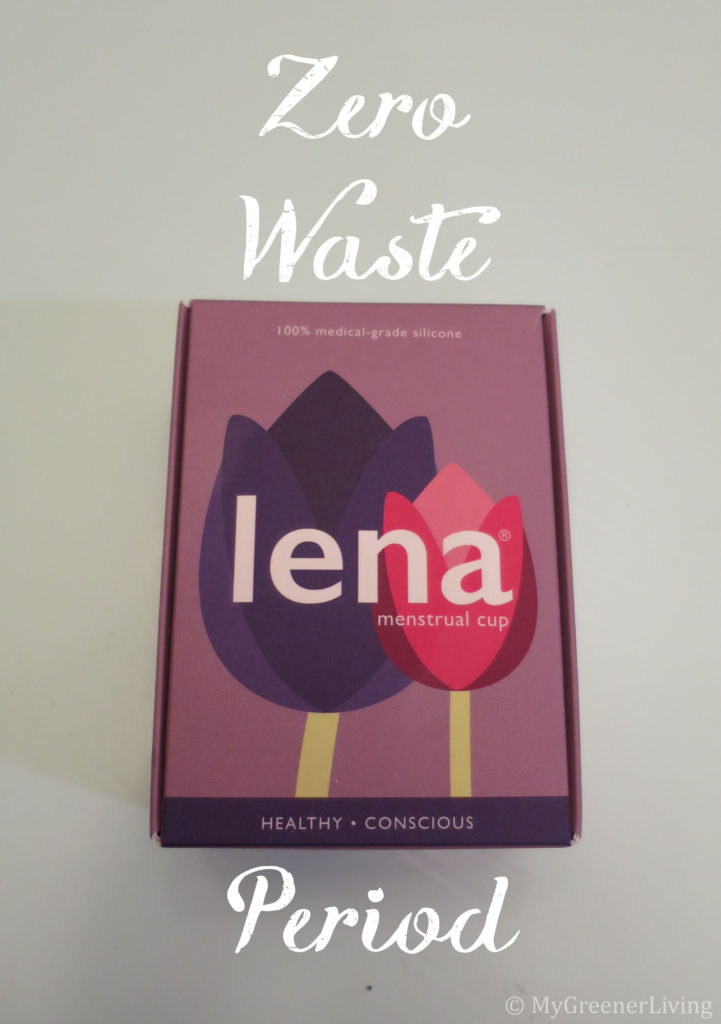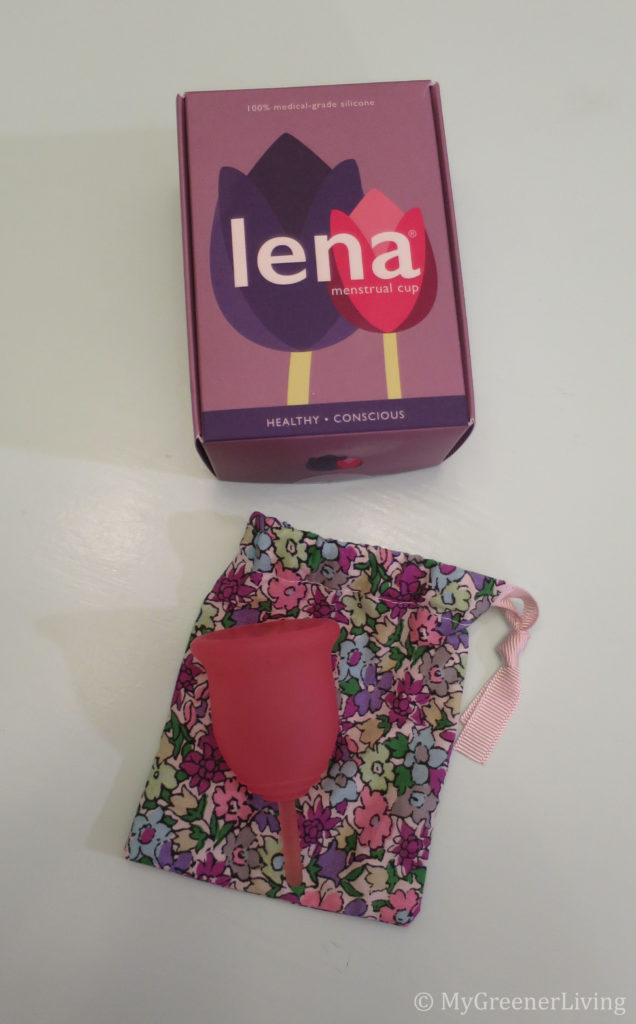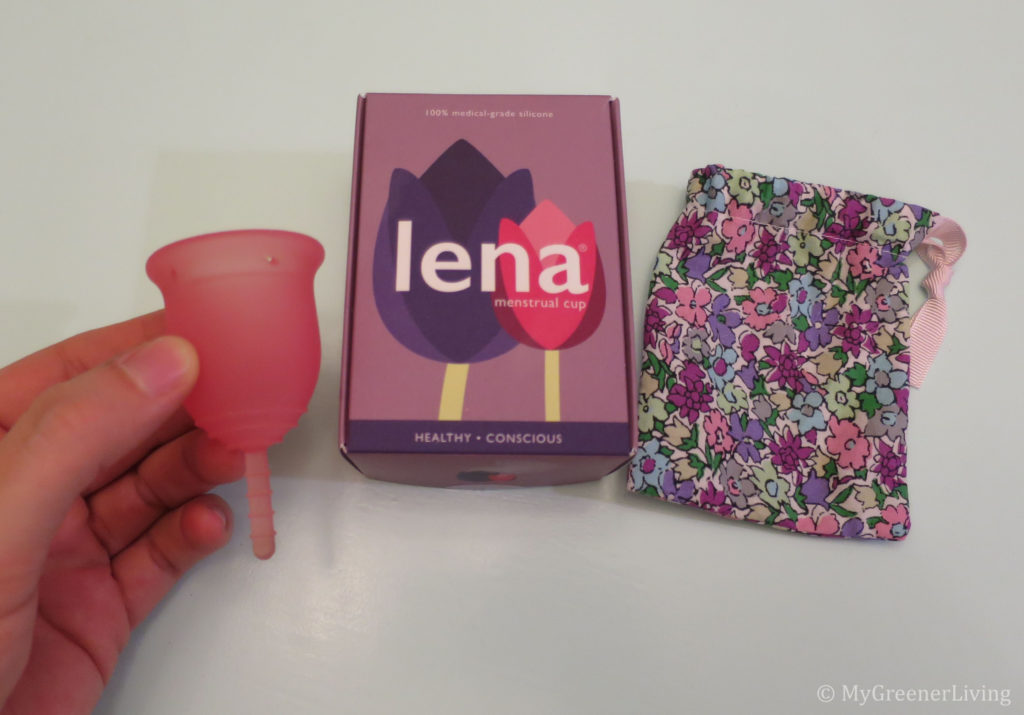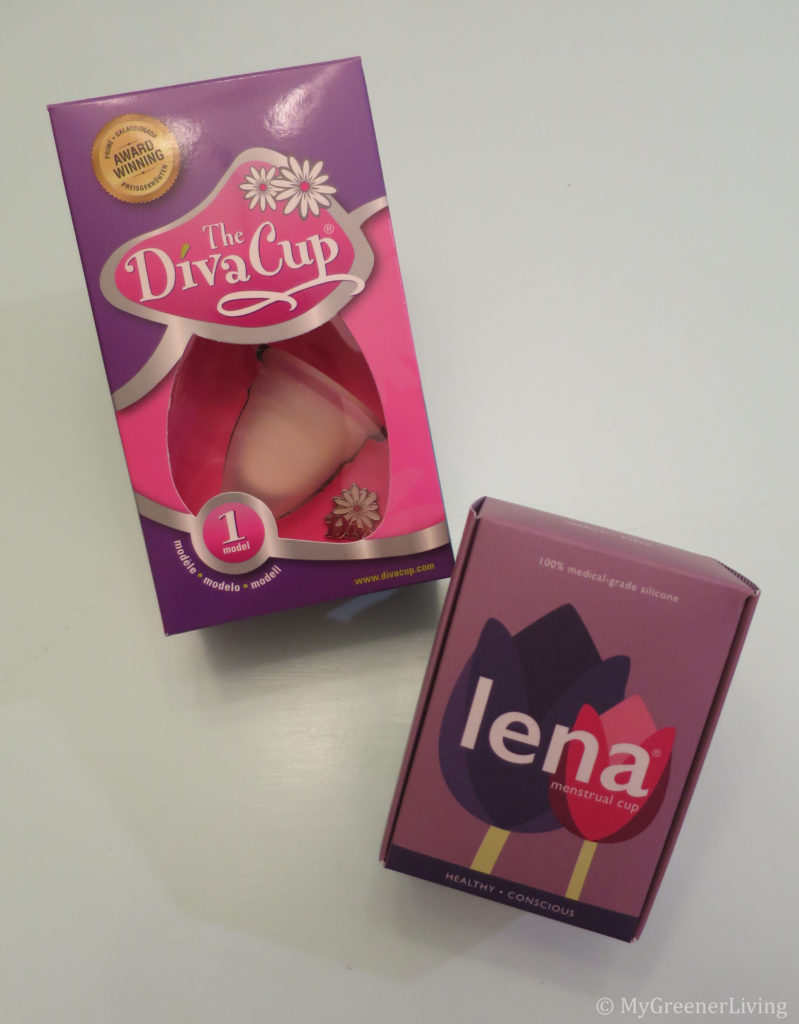This post is for all you ladies out there who hate how much waste you generate each month during your “time of the month.” If you’re not a lady, or are a coworker and suspect this may be too much information, it probably is. And you should probably stop reading. Maybe jump over to this fun article about my favorite environmentally friendly kitchen products!
Disclaimer: This post contains affiliate links. See my Disclosure Policy for more information.
Ok, hopefully I’ve filled enough of the page with unrelated text that you didn’t see anything you don’t want to see. Now I’ll get on with the cool product that I discovered before a SCUBA diving trip that has allowed me to have zero waste periods for 4.5 years and counting – the menstrual cup!
 The average woman who uses tampons will use 5,000-14,000 in her lifetime. That’s based on average use of 11-30 tampons per month. I used to be right on that average 20. That is so much waste ending up in the landfill – not just the tampons, but the packaging, the waste associated with manufacturing, transportation, and probably more that I’m not thinking about.
The average woman who uses tampons will use 5,000-14,000 in her lifetime. That’s based on average use of 11-30 tampons per month. I used to be right on that average 20. That is so much waste ending up in the landfill – not just the tampons, but the packaging, the waste associated with manufacturing, transportation, and probably more that I’m not thinking about.
Additionally, tampons may be laden with chemicals. Everyone thinks about organic/pesticide free food to avoid the health risks potentially associated with pesticides. I’ve already started sharing simple homemade cosmetics (lotions, sunscreens, soaps…) that are free of synthetic chemicals and pesticides . But so few women think about their “monthly” products, or if they do, it’s tough to find information about alternatives because it is such a taboo subject – at least in the culture in which I live, here in the US.
The fact is, many products that contact our skin can be absorbed through the skin. Absorption through skin is dependent on many factors, including particle size, if the skin is intact (or has cuts, tears, abrasions), thickness of the skin in the exposed area, duration of contact, and more. With an average period lasting 4 days and occurring every 28 days, that’s roughly 13 periods a year, totaling 52 days. If you use a tampon that whole time, that is 14% of your life during years of menstruation! I don’t want chemicals absorbing into my body, especially for that much time, just to deal with a normal female bodily function.
Luckily, there is a solution: the menstrual cup!
The Menstrual Cup

The menstrual cup may be my favorite invention ever (ok, there are too many awesome ones to pick a favorite, but it is pretty high up there in my opinion). The menstrual cup is a flexible silicone cup that is inserted into the vagina with the opening positioned around the cervix. It captures your flow before it leaves your body. The manufacturer websites provide excellent information and instructions on how to use menstrual cups (Check out Lena menstrual cup product info and insertion video on the home page – it is informative but not graphic). It definitely takes a little practice and time to get used it, but I will never go back.

The Good
- If sized and inserted properly, you will NOT feel it. At all.
- ONE can be reused for about 10 years (per manufacturer claims. I used a Diva Cup for 3 years and have been using a Lena Cup for 1.5 years, with no sign of damage or break-down)
- NO pesticides or bleach is entering your body, as can happen when using tampons. My skin is highly sensitive – I get contact dermatitis and skin irritation a lot, and I have never had any problem with contact to silicone. Everyone is different, so there is a chance that you could have a sensitivity to silicone.
- Saves money!
The Bad
Silicone is not the same as the naturally occurring element silica. Silicone is synthetic, and bioaccumulative (meaning that, like plastics, once created it will never fully break down). However, since 1 cup can last 10 years, which is roughly 130 periods and 2,600 tampons, I personally believe this product leaves a smaller environmental footprint.
How to choose which menstrual cup is right for you?
It can be a bit challenging, finding the menstrual cup that is right for you. In all honesty, for me it was a little bit of trial and error. When I first purchased a menstrual cup, it was the day before I was to fly to Florida for a vacation including SCUBA diving. The last time I dove, I remember being really irritated at having to deal with tampons wetsuits, and limited access for restrooms. Since I waited until the last minute, my options were limited to the Diva Cup – the only reusable menstrual cup that I could find in a brick and mortar store anywhere near me. Reading up online, it seemed good enough.

After using the Diva Cup for about a year, I grew frustrated that I could always feel it, ranging from conscious awareness to constant discomfort. I found a menstrual cup size comparison online (there are many others, in case this one doesn’t contain the cup you’re considering), and based on dimensions and Amazon reviews, I selected the Lena menstrual cup size small. It fits me perfectly, and I expect to use it for many more years.
Care
As the manufacturers recommend in their instructions, I clean the menstrual cup with a fragrance free soap each time I empty it. My homemade liquid castile soap or Dr. Bronner’s castile soap work great.
Every several months, when I notice the silicone looking a bit stained, I soak the menstrual cup in hydrogen peroxide for a few hours or overnight. After that soak, the cup looks new!
After use, I allow to air dry, then put the menstrual cup in its cute little bag and tuck it away until the next month.
Cost
Menstrual cups cost about $15-40 each. I personally love the Lena menstrual cup, which costs $25 for one cup or $40 for a 2-pack (1 of each size). Using the cost of a single Lena menstrual cup for comparison, the 10-year cost of the cup versus tampons is:
Lena menstrual cup: $25 x 1 =$25 for 10 years
OB non-applicator tampons, 40 pack. ($6.50/pack) x (1 pack/2 periods) x (13 periods/year) x (10 years) = $422.50 for 10 years
This means that the Lena menstrual cup pays for itself in only 8 months! In 10 years, it saves ($422.50-$25= )$397.50.
Lifetime Cost
Assuming a the average 38 years of menstruation, lifetime cost is:
Lena menstrual cup: $25×4=$100 for 38 years
OB non-applicator tampons, 40 pack. ($6.50/pack) x (1 pack/2 periods) x (13 periods/year) x (38 years) = $1,605.50 for 38 years
Lifetime savings is $1,605.50 – $100 = $1,505.50.
My personal costs

As I mentioned, I tried the Diva Cup before finding the Lena cup. Even with one “failure” purchase (which wasn’t a complete failure – it allowed me to select the correct size the second time), I am still better off financially (as well as health and environmentally) than if I stuck with tampons.
Diva Cup + Lena Cup: $40+$25=$65; have used for 4.5 years
OB non-applicator tampons, 40 pack. ($6.50/pack) x (1 pack/2 periods) x (13 periods/year) x (4.5 years) = $190.13 for 4.5 years
Savings: $190.13-$65=$125.13
Have you tried a menstrual cup? Do you have questions? Share in the comments below, or feel free to send me a private message using the form on this page!
